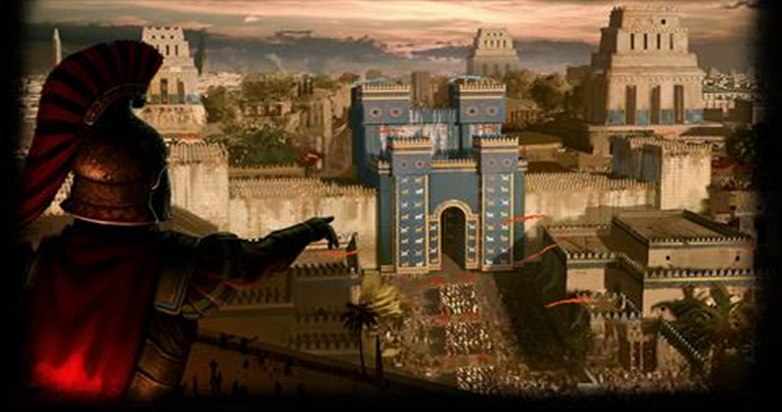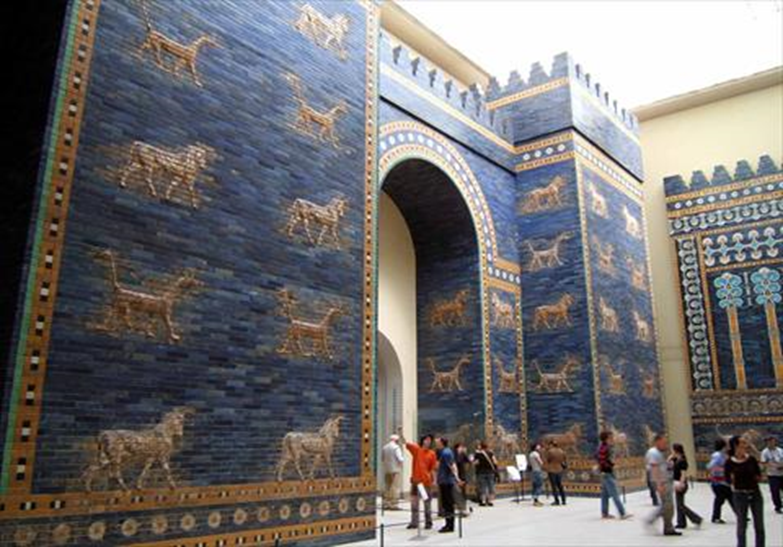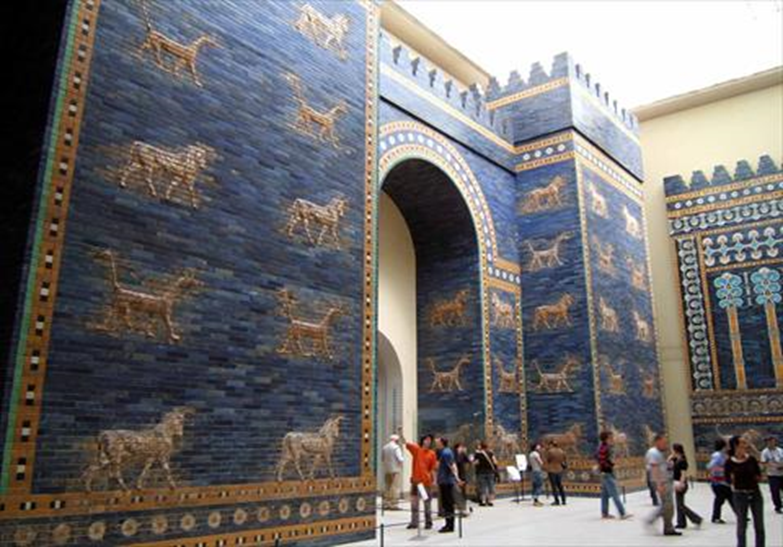Ishtar Gate...the most beautiful monuments of Iraqi Babylon that were looted by Germany

The world contains, inside and out, majestic archaeological treasures and many artifacts, and even landmarks whose splendor has not diminished despite the passage of time, each of which contains and carries its own story and secrets, behind every discovery and landmark are stories dating back to distant ages and different places, on top of which are those unique pieces and distinctive historical monuments in our country, It has the oldest civilization in history, and still contains the most famous artifacts and monuments in the world.
Therefore, in the holy month of Ramadan and throughout its days, Al-Shorouk presents to you its daily episodes of the “Athar Story” series, taking you with it on a journey to place, time, and different eras, and telling you the interesting historical stories behind the most prominent archaeological pieces and landmarks in the world and even history.

There is no doubt that whoever sees the Babylonian Ishtar Gate as it shines proudly inside the Perkamon Museum in the German capital, Berlin, whether on a visit to the historical museum, on television, or even seeing its many pictures spread among the pages of books, magazines, and the Internet, wonders about the story of this ancient Iraqi archaeological landmark, and how Arrived in Germany?
Ishtar Gate...the address of ancient Babylon
“Ishtar Gate” is the eighth gate to the inner city of Babylon, which is located between the Tigris and Euphrates rivers in what is now known as Iraq. It was built by its king, Nebuchadnezzar II, in the sixth century BC, who dedicated it to “Ishtar,” the goddess of love and war. As indicated by a memorial inscription recorded on one of its sides.

At the height of the prosperity of the city of Babylon, which is located among the Seven Wonders of the World, and when its population exceeded two hundred thousand people, and when it constituted the largest civilization in the world, the huge Ishtar Gate represented the main door and a symbol of the splendor of the city, as this historical gate was the first thing that a visitor to Babylon encounters. It appeared as the address of the city and its apparent landmark that is known about it.
In Babylon, the Ishtar Gate remained the strongest symbol of the splendor and splendor of the ancient city. It was the main gate of the second city wall, the gate located on the main street of the city, and the sacred road that connected the city to the house of religious ceremonies. Processions would pass through the large, ancient gate.
A historic gate built with art and splendor
The historic gate was built using polished ceramic-like stones, the colors of which varied between blue, red and yellow. Its height and towers are about fifty meters, and its width is eight metres. As for the two prominent towers on either side of the entrance, each is about fourteen meters wide, and they are entirely covered with alabaster. Blue, white marble, and colored tiles, decorated with about six hundred prominent animal figures, including dragons, bulls, and lions. Its doors are covered with copper and have bronze bolts and hinges.

Discovery of the gate...and German greed
The Ishtar Gate remained hidden from view until it was found at the end of the nineteenth century and the beginning of the twentieth century, when German archaeologists, led by archaeologist Robert Coldaway, arrived there in 1902. Who said that it constitutes the largest and most striking monument among the monuments of Babylon.

Transferring the Babylonian masterpiece with a systematic plan
After the discovery of the gate, its parts were reassembled by German archaeologists, until World War I broke out in 1914, so the Germans stopped working on the historic gate. However, four years later, when the war ended and the Ottoman Empire collapsed, the Germans rushed to negotiate with the British forces occupying Iraq. , to ship some of the antiquities they found to Berlin, including the Ishtar Gate.

Germany quickly seized the original Ishtar Gate and transported it from Mesopotamia. The huge archaeological masterpiece was dismantled into its smaller components, and under the supervision of an archaeological technician, it was transported across the Tigris River to the port of Basra and then transported by ship to Berlin in several batches.
Stealing, plundering and displaying to the public
The gate has been displayed to the public since the 1920s, bringing the splendor of ancient Babylon back to life in a way that had never happened before for thousands of years. The Ishtar Gate in the Pergamon Museum in Berlin, Germany, is still considered one of the most important main monuments in the museum, and what is in Babylon, today, from the gate. It is only a small symbol of the original looted gate, which displays in Berlin museums.

The Baghdad and Berlin war... and there is no intention of returning
Since then, the Ishtar Gate has sparked great controversy And mutual accusations between the German and Iraqi sides regarding the story of its discovery by the German mission, and Germany’s right to keep it.
Iraq announced that the Babylonian Gate had been transferred from Baghdad to Berlin illegally, and the Iraqi Minister of Antiquities demanded that it be returned to Iraq to be displayed in its country’s National Museum, a demand that Germany did not care about despite the passage of decades, making it like hundreds and thousands of demands from Arab and foreign countries. To Berlin to return their artifacts looted during the wars.
The writer Hamid Khairy Al-Haidar said in his study “Ishtar Gate, the wonderful Iraqi architectural masterpiece”: “The process of stealing the gate and covering it was truly no less massive, meticulous, effortful, and planning than the process of constructing the gate itself!”

Written by: Manal Al-Waraqi:
Translation:Forum
Source: websites

